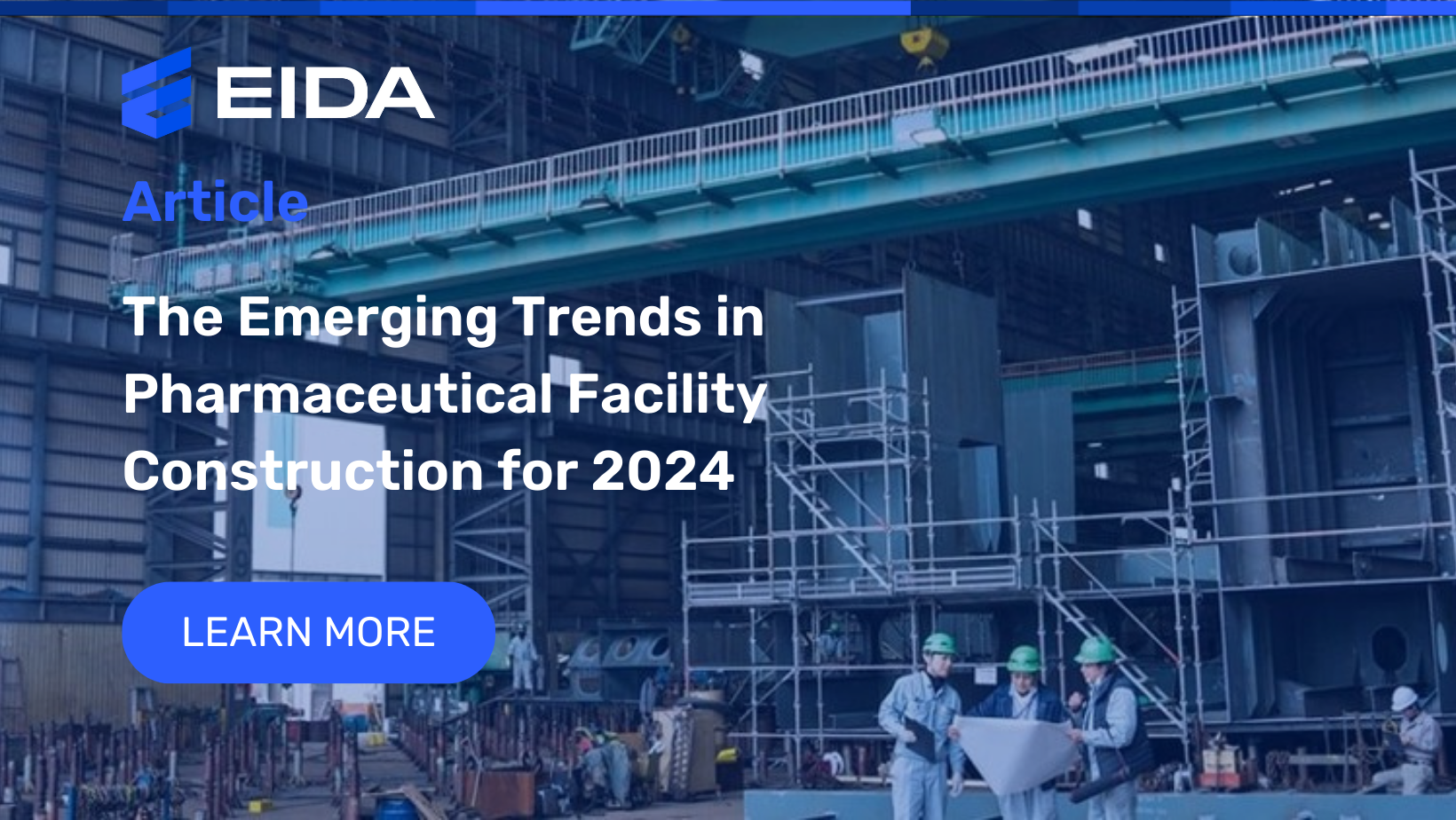Emerging Trends in Pharmaceutical Facility Construction for 2024
The pharmaceutical industry is continually evolving, driven by advancements in technology, regulatory changes, and a growing focus on innovation. The demand for cutting-edge therapies and medications continues to rise and with it the need for state-of-the-art manufacturing facilities that can meet the highest standards of quality, safety, and efficiency.
Looking ahead to 2024, this article will explore some of the key trends that will likely impact, shape and define the construction of pharmaceutical and life sciences facilities in the coming year and beyond.
Digitalisation and Smart Facilities
The importance of integrating digital technologies and embracing the concept of smart facilities is on the rise in pharma facility construction. Automated manufacturing processes and the adoption of real-time monitoring of equipment and the environmental conditions they operate in are becoming par for the course on the best new build facilities. As they say “data is the new oil” and pharmaceutical companies are leveraging the power of data to enhance productivity, quality control, and overall operational efficiency.
Flexible and Modular Designs
Pharma facilities have traditionally faced challenges in adapting to new production requirements that see huge cost and effort in refitting and repurposing. For these reasons the industry is seeing a shift towards flexible and modular designs. These designs allow for easy reconfiguration of spaces and equipment, enabling pharmaceutical companies to respond quickly to market demands, scale production, and accommodate new technologies. Modular designs can be very cost effective and can allow for prefabrication of key components off-site.
We are also seeing the top companies build near identical facilities in different markets like the US and Europe where economies of scale and know-how can be taken advantage of. Clients and contractors are also utilising the right construction management, turnover and commissioning software to successfully deliver these new facilities.
Green Building Practices and Sustainability
Sustainability is no longer a buzzword, tickbox or gold star, it’s become a fundamental part of pharmaceutical facility construction and with it, clients and contractors and increasingly incorporating green building practices. These help to minimise the impact to the environment, reduce the energy consumption needed and optimise the resource usage. It has also become an important component of getting planning permission.
Risk Mitigation and Compliance
Pharmaceutical facilities must adhere to stringent regulatory standards to ensure the safety of its products. In 2024, there will be a heightened focus on risk mitigation strategies and compliance with industry-specific guidelines and regulations. This includes the implementation of advanced quality management systems, validation protocols, and documentation practices.
Incorporation of 3D Printing
The adoption of 3D printing technology is set to transform the pharmaceutical facility construction landscape. There are many benefits to 3D printing, parts and components can be tailored to a specific project, offering greater design flexibility and improved functionality.
It can also significantly reduce waste by using only the amount of material needed to create a structure, leading to cost savings and improved sustainability. It can also significantly speed up the construction process as parts and components can be quickly made on-site and avoids the wait for shipping/delivery.
The trends shaping pharmaceutical facility construction in 2024 reflect the industry’s commitment to innovation, sustainability, and adaptability. As pharmaceutical companies aim to stay ahead in a rapidly changing landscape, the construction of state-of-the-art facilities will play a pivotal role in ensuring the efficient and compliant production of life-saving drugs and medicines. With a focus on green practices, digital integration, and flexibility, the pharmaceutical industry is poised for a transformative year in facility construction.

